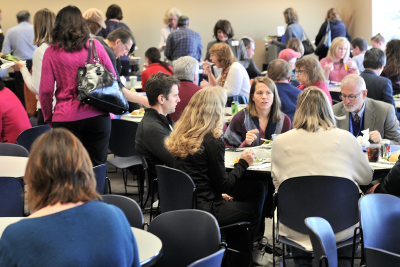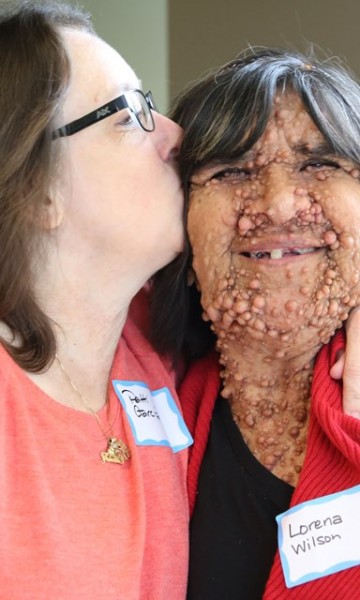A Simple, Life-Saving Action for NF1
The following is a blog by Dr. Luiz Rodrigues . Originally posted in Portuguese on September 15, 2015. Additions and translation were provided by Dr. Mata-Machado from the NF Clinic at Amita Health/St. Alexis.
I am going to comment on a problem that affects only 4% of people with NF1, but it can be treated with great efficiency and that just a very simple action to save the life: measuring the blood pressure regularly.
The relatively recent increase in blood pressure in people with NF1, especially in children, young people and young adults, should make the doctor think of two important causes: 1) renal artery stenosis and 2) a tumor called pheochromocytoma.
Let’s first see the stenosis of the renal artery.
The renal arteries are blood vessels that carry the blood to the kidneys, so that the blood is filtered and some excess substances are eliminated (eg, acids and nitrogen) in the urine. For the blood to be filtered, it must reach the kidneys with a certain pressure, which is provided by pumping the heart.
In about 2% of people with NF1 a defect (called fibromuscular dysplasia) can occur in the tubing of the renal arteries, which causes a narrowing, which causes blood pressure to decrease in that kidney that receives blood from the narrowed artery . As blood arrives with less pressure than is necessary for filtration, the kidney itself produces substances that force the heart to increase the pumping pressure.
The result of this narrowing, then, is that blood pressure, which must be measured with ordinary pressure devices during regular annual check-ups, rises above normal limits for the person’s age, height, and sex.
If blood pressure stays increased for a long time, the heart, kidneys, and cerebral arteries can be damaged and serious problems can occur, such as a heart attack, inability of the kidneys to seep through blood or strokes. Therefore, high blood pressure should be treated.
Fortunately, in NF1, there is the possibility of treating the defect in the renal artery and thus the hypertension can be cured in about 75% of the people. The treatment consists in the accomplishment of an angiography, that is, in an image examination to visualize the caliber and the format of the renal arteries, to prove the narrowing and its location. Generally, a catheterization is done by local anesthesia and passage of the catheter through one of the arteries of the legs.
Then, during the imaging procedure itself, a special metal dilatation (stent) ring is placed in the narrowed region, recovering the normal caliber of the renal artery.
This treatment, transluminal angioplasty, should be the first to be tried, as it presents 60% of good results.
When the dilatation ring is not possible or does not work, or the narrowing returns, the kidney autotransplant may be necessary, ie surgery that disconnects the kidney from its obstructed artery and reconnects it to another healthy artery. Unfortunately, in a few cases it may be necessary to remove one of the kidneys to treat hypertension.
Therefore, according to the group of Dr. Ferner, from Manchester (2011), the treatment of hypertension secondary to renal artery stenosis in NF1 is a combination of antihypertensive medication, transluminal angioplasty and surgery.
For this reason, I insist that blood pressure measurement is mandatory, indispensable, fundamental and can save a life in 2% of NF1 patients during an annual exam.







.png)






How often do you recommend a NF1 patient (a toddler, age 2) be tested for HBP? We are having elevated reads for my 2 year old but he is extremely upset during the exam so the result could be inaccurately high.
We’re not physicians here, though we do consult with them. Yes, your child should have her blood pressure checked at least yearly and more often if there are concerns. Maybe with practice, she won’t get as upset. Maybe you can get a “play” blood pressure kit :).
Worried about this right now for my daughter…. awww
We are hoping to get an updated article regarding stenosis!
Thanks for posting such an informative topic. Keep updating!
Thank you!
Not sure if this is still monitored…but! I’m 49 y/o with NF1. This summer after a TIA and then realized (after tons of imaging). MCA, occlusion, left cerebral artery occlusion, and PNST C3-C7, I’ve had 4 UTIs! I asked for a urologic referral….but maybe this article refers to a possible culprit! Thoughts?
Debra, We’re not doctors so hard to say! People with NF1 seemed to have a higher of all sorts of complications and more vascular issues…so maybe.
I am a NF1 patient I officially diagnosed with it when I was 65 (6 years ago) when I had the whipple procedure for duodeanal and pancreatic cancer. I do have a few external bumps but I have more inside I had never been diagnosed because not much is know about it because it is rare I am the first in my family to be effected by this I feel lucky because I didn’t start to see the bumps until I was in my 30’s These internal nodules as my oncologist calls them are on my liver and lungs One of them has grown a little in the last 6 months
Please give my any information or suggestions as I am concerned about a recurrence of cancer Thank you Nancy M
Nancy, Where are you located? We might be able to direct you to a local organization that might have info for you. Currently, we don’t have any articles on cancer in NF (we’re working on it!).